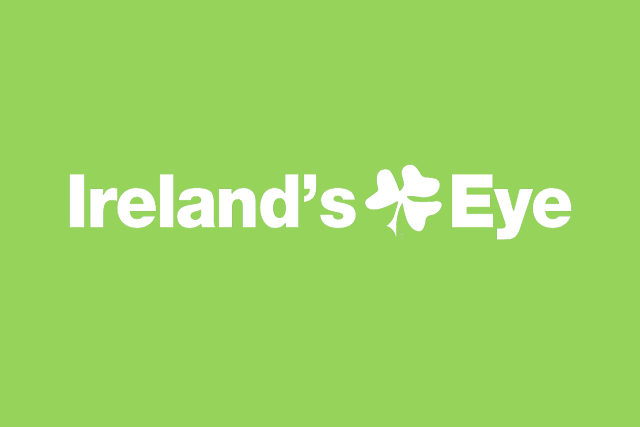By Declan Fitzwilliam
Today in Ireland we’ve an amazing choice of foods. There are ‘healthy’ foods, slimming foods and organic foods. And all are easily obtainable, fresh and hygienically packed from your local supermarket.
But what did the Irish eat in days gone by? Milk formed an important part of the Irish diet – not only as a drink, but for making butter, cheese and curds. A seventeenth-century traveller in Ireland remarked: “The Irish are the greatest lovers of milk I ever saw. They eat and drink it in about twenty sorts of ways.”
The twelfth-century poem ‘Vision of MacConglinne’ mentions wheat, oats and barley, leeks, onions and carrots, while honey was used as a sweetener. The oats, barley, wheat and rye were eaten mainly as bread and porridge.
Oaten bread was the most common type. Barley bread was regarded as suitable for monks and those who wished to mortify themselves. And wheaten bread was considered a luxury.
Long ago in Ireland, porridge wasn’t exclusively eaten as a breakfast food. It was also eaten in large quantities at midday, evening and for supper. Usually made from oats, wheat, barley and mixed with water, new milk or buttermilk, it was often eaten hot or cold. Porridge was served thick or as a runny liquid, flavoured with salt, sugar, butter, honey or herbs.
The ancient Irish didn’t thresh their oats. They burned them from the straw and made them into cakes. After the corn was ground into meal, it was sieved to make fine flour for bread-making. This was kneaded in wooden troughs called lossets.
The built-up ovens, introduced by the monastic orders, were confined to the towns and villages in eastern and southern Ireland. If you didn’t have the luxury of an oven, you’d place your bread on the glowing coals wrapped in a large cabbage leaf. Otherwise, you heated your hearth by taking hot coals or turf from the fire. After they were removed, the bread was baked on the hot stone.
The pig was kept as a domestic animal. Wild swine were hunted. People ate mutton and beef. Sheep were kept for wool. Fishing was popular and Ireland exported large quantities of pilchards, hake, cod, herring and salmon to England.
The most popular Irish drinks were milk and whey. Ale too was drunk. Wines had been imported since Roman times, but were only drunk by the rich.
Irish food, with milk and corn forming the staple diet, remained unchanged until the potato was introduced. After this, eating habits changed. Some foods, like cheese and ale, were forgotten. By 1845, the change from grain to potatoes was complete. On average, at that time, adults ate an amazing ten pounds of potatoes per day! Ireland produced fifteen million tons of potatoes each year. Almost half of these were used for human consumption.
Meat was a luxury, but not many vegetables were grown. Cabbage was sown as a safe crop instead of potatoes. After boiling, mashed potatoes were mixed with cabbage, kale, onions, leeks and milk to make that delicious dish called colcannon. Bread of pancakes made from potatoes and flour, cooked on the griddle or pan was called ‘boxty’.
A report of famine on Aranmore island said: “Many families live on cockles, periwinkles and other shell fish. Nettles and charlock are also used”.
The connection between food and religion was always strong in Ireland. Grace was said both before and after meals. The custom of never refusing food to beggars was seen as a duty to God who provided all food. When baking, a cross was always put on top of the cake. Husks of corn, mixed with oatmeal and water made a nourishing drink called sowens. Baker’s bread, as white loaves are called in parts of Ireland, was a luxury. In Tipperary, the white loaf was called ‘priest’s bread’ and only bought when the priest visited the house to say Mass. Wealthy farmers ate geese and fowl of all kinds as well as mutton, potatoes, carrots, parsnips and cabbage.
Long ago in Ireland, different foods were thought suitable for different types of work. A cake as big as the wheel of a donkey cart was made with curds. Butter and eggs was for men cutting turf in Killarney. In Ulster, a match-making cake was baked by the bride’s mother. This was cut and eaten as soon as the couple had agreed on the dowry and the date of the wedding. Cake dances were held. Whoever paid and danced the most got the cake!
In the north, also, dulse was a popular edible seaweed along with carrageen. This makes good jellies, beverages and blancmanges. It was also used in bread and pastry.
Dried fish, herring, whiting and ling were popular, cured in kelp ash, they were seen on the tops of houses.
In Co. Cork, a distinctive pudding called drisheen was made from sheep’s or pig’s blood.
Nevertheless, towards the end of the last century people became more reliant on factory produced food. And as more people left the land for towns, the old eating habits of Ireland changed. And more recently, with the proliferation of celebrity chefs and cooks on television, our eating habits are changing even further. Nevertheless, that most appetising old Irish dish of all, boiled cabbage and bacon, remains a firm favourite!

